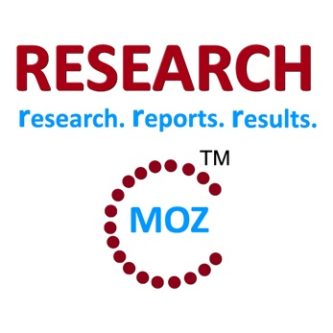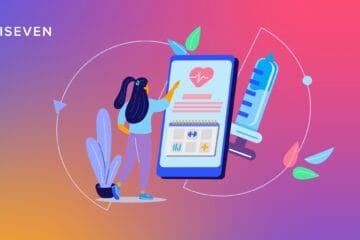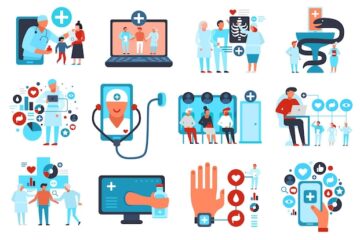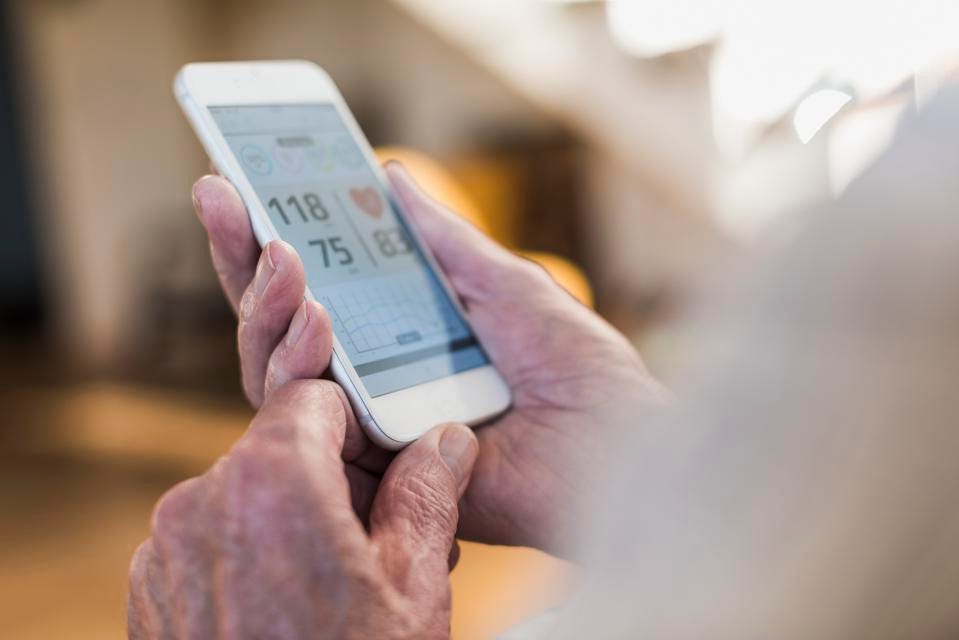
Researchmoz added Most up-to-date research on “Push Telecommunications for Tele-Medicine (PTT) and M-Health: Market Shares, Strategy, and Forecasts, Worldwide, 2015 to 2021” to its huge collection of research reports.
The 2015 study has 815 pages, 259 tables and figures. Worldwide markets are poised to achieve significant growth as the push systems are used inside telemedicine systems and m-health apps to move patient and clinician communication in a secure manner to and from the person or clinician that needs the healthcare information. Telecommunications initiatives are being implemented with handset and tablet communications for all patients and clinicians.
Tele-medicine and M-health market driving forces relate to people taking more responsibility for their own health. Tele-medicine and m-health contribute to healthcare delivery in the home and office. M-health, delivered over the smart phone and tablet, comes in the form of apps. Tele-medicine is evolving toward smart phone device delivery as well.
The cost of tele-medicine for the US veterans administration is $1,630 per patient per annum. This is substantially less than skilled nursing facility programs and nursing home care which cots $100,000 per annum. VHA’s positive experience with enterprise-wide home tele-medicine implementation is driving adoption by hospitals everywhere. Telemedicine is an appropriate and cost-effective way of managing chronic care patients in both urban and rural settings.
The tele-medicine adoption rate is growing. Cost of care delivery has become a major concern worldwide as the population ages. Mobile phone apps and remote telemedicine equipment are driving increased adoption, growing adoption rates. Concerns regarding the efficacy of care through use of tele-medicine in healthcare industry have alleviated. Reimbursement is being made available for clinicians for the use of tele-medicine.
To Get Sample Copy of Report visit @ http://www.researchmoz.us/enquiry.php?type=S&repid=270539
Patients are being encouraged to take more responsibility for their own care. Technology is bringing change. People have more accurate information available to themselves. The current situation is impacted by the very high proportion medical spending that is directed to treatment of chronic disease. A second aspect is that chronic conditions are best controlled by interventions on a daily basis with a trusted nurse monitoring and measuring outcomes of various situations.
The tele-monitors integrates with the management suites to empower care providers within healthcare systems, physician offices, or home health agencies with web-enabled, on-demand access to this configurable device. Wireless connectivity with a broad range of peripheral devices supports patients with a variety of the needs and risk factors.
Medical consultation systems to allow healthcare providers to remotely monitor patients around-the-clock. Voice-enabled, disease-specific symptom management (DSSM) questions are part of the system. Protocols (include multi-level questions. Multilevel questions sets can be triggered by yes or no answers.
This level of granularity enables care providers to telemonitor patients with chronic diseases. Disease conditions monitored include hypertension, COPD, CHF, and diabetes. Honeywell network of remote patient monitors consists of 70,000 installed units. This is a significant installed base. Honeywell offers a complete and flexible telemonitoring system. Accurate vital signs collection is improved with clear auditory and visual cues to the patient.
This study deals with three separate related markets. Telemedicine is the tracking and monitoring of chronic disease. Vital signs and advice are core parts of the business. M-health is a separate business related to the development of apps that are providing monitoring through smart phones and tables, and are providing wellness applications. Tele-health is a related market. In tele-health, companies, enterprises, and insurers contract with a services provider to be available on the telephone to help people deal with a virus, an infection, poison ivy, pink eye, and common disease conditions that can be managed with telephone or video communications..
M-Health relates to apps. The app helps healthcare providers meet patients where they are, enabling just-in-time patient education and care coaching through the power of the mHealth. Health Groups are evolving worldwide leadership positions in mobile health systems with millions using its mobile health applications on iOS and Android, enjoying the personal and family benefits of being led to live a more active, healthier lifestyle.
Push telecommunications for tele-medicine (PTT) and M-health supports custom messaging from patients on a daily basis. Messaging is a feature of the Bosch Health Buddy System and other leading telemedicine systems. The systems rely on content programs that are tailored to patient conditions and involve questionnaires tailored to the chronic condition in the case of patients with those types of disease conditions.
With chronic disease telemedicine systems, content is pushed out to the patient on a custom basis, addressing changes in patient condition. Content varying is implemented each day to assess different key aspects of care and to keep the experience fresh for patients. The custom messaging feature enables care providers to send customized notifications to specific patients or their entire population with the click of one button. Messages appear on the patient’s device display on their next session, and are archived and audited by the system, allowing the care provider to track when patients receive and view their messages.
In the case of remote presence telemedicine systems and video conferencing systems, the care giver needs to have access to the patient record. In the long term, this will be how the systems all work, that the physician talking to the patient has the ability to see the test results and the patient history.
There is strong market growth in all segments, but the most dramatic is in the smart phone apps segment. Electronic personal monitoring and profiling of healthy behaviors will grow dramatically. The unprecedented availability of sensors that detect sleep patterns, exercise patterns, and correlate these with vital signs monitoring is bringing a huge change to living.
Just as sports clubs have created a way for people to exercise instead of going to the bar, so also smart phones will encourage healthy behaviors. The information gathered will make its way into the electronic patient record, feeding ways for physicians to encourage compliance. Apps at $.99 each will predominate, linking to cognitive computing systems in the cloud.
The analytical capabilities of cognitive computers help people make sense of the accumulated information about lifestyle and will help people make more intelligent choices about lifestyle. Tele-medicine device and software companies recognize that their revenue stream will come from services delivery. Just as smart phones are paid for in conjunction with the services contracts, so also the tele-medicine applications are paid by insurance.
In some cases the insurance companies recognize that their long term costs are lower by delivering clinical intervention to try to impact lifestyle for patients with chronic disease conditions. Early intervention is dramatically less expensive than a trip to the emergency ward. (ER)
IBM Watson cognitive computing drives the M-health market with its cloud computing analytics available to a number of market participants. Healthcare patient, physician, and facility decision support markets are forecast based on the broad availability of smartphones combined with the IBM Watson technology that promises to revolutionize care delivery for every healthcare venue.
Watson offers Interactive Care Insights for Oncology. The cognitive systems use insights gleaned from the deep experience of Memorial Sloan-Kettering and Massachusetts General Hospital clinicians. Watson is positioned to permit clinicians to provide individualized treatment. More options are based on patient medical information. IBM Watson in combination with Memorial Sloan-Kettering Cancer Center has information that represents the synthesis of a vast array of updated and vetted treatment. It is able to compute individual treatment guidelines. This represents a revolution in cancer treatment care and presages a major revolution in all healthcare treatment and diagnosis.
Teladoc, Inc. provides telehealth services in the United States. It has a stable of doctors that perform diagnoses, recommend treatment, and prescribe medication for various medical issues, including cold and flu symptoms, bronchitis, allergies, poison ivy, pink eye, urinary tract infection, respiratory infection, sinus problems, ear infection, and more.
Teladoc is the largest telehealth provider in the nation, founded in 2002. Teladoc provides 24/7/365 access to U.S board-certified doctors. Telehealth services are available when needed. Teladoc is the nation’s leading telehealth provider with 10 million members and 300,000-plus consults annually. Teladoc provides 24/7 access to affordable, high-quality medical care for adults and children experiencing non-emergency medical issues via phone, secure online video, mobile app or HealthSpot™ Station – a private, walk-in kiosk. Through a directly-managed network of U.S.-based, board-certified physicians, Teladoc delivers a 95 percent patient satisfaction rate with an average response time of eight minutes.
Teladoc client EMC Corporation Teledoc works closely with the Director of Benefits to leverage telemedicine services for employees. Telemedicine is offered as part of benefits packages. Teledoc provides employees with greater access to convenient, high quality medical care.
Worldwide Tele-medicine and M-health PTT push market driving forces relate to the improved effectiveness of remote communications in all industries. An clinical reimbursement addressing mobile health initiative for chronic conditions. This trend promises to become prevalent as people learn how to keep themselves healthier. Healthy behaviors such as exercise, good diet and stress management have the potential to reverse aging on a molecular level and partly restore the vitality of a person’s cells.
Healthy lifestyle choices can increase the length of DNA sequences found at the end of a person’s chromosomes. This shift toward wellness has stimulated the need for better communication between clinicians and patients. New sensor technology creates the opportunity for monitoring and for alerts to be send to and from at risk people who are exercising.
PTT telemedicine markets are poised to achieve significant growth as the existing telemedicine systems merge with the smart phone systems of engagement to provide a way to improve clinical care delivery to patients with chronic disease, decreasing hospitalizations and visits to the emergency room. There is a convergence of telemedicine and m-health as the patients become more responsible for their own care delivery and their own health.
Browse Our Latest Press Releases @ http://www.researchmoz.us/pressrelease
According to Susan Eustis, lead author of the WinterGreen Research team that prepared the telemedicine market research study, “Push technology for telemedicine (PTT) is evolving large new markets. Markets are evolving as smart phone devices find more uses. Differential diagnostic tools and significant improvements in monitoring support differential tele-medical treatment. The decision process takes into account clinical findings from home monitoring devices and from symptoms verbally communicated in a clinical services implementation.”
Tele-medicine, telehealth, and m-health contribute to healthcare delivery. M-health will surely be delivered over the smart phone and tablets. Tele-medicine is evolving toward smart phone device delivery as well. The cost of tele-medicine is substantially less than other NIC programs and nursing home care. VHA’s experience is that an enterprise-wide home tele-medicine implementation is an appropriate and cost-effective way of managing chronic care patients in both urban and rural settings.
Chronic disease conditions are best treated early on when there is a change in patient condition and an early intervention can make a difference. It is even better to treat them in a wellness treatment environment before there are indications of chronic disease, before symptoms develop, by addressing lifestyle issues early on.
Telemedicine, telehealth, and M-health markets at $1.5 billion in 2014 are anticipated to reach $45.4 billion by 2021. M-Health markets related to telemedicine will grow the fastest, leveraging 9.5 billion smart phones and 5 billion connected tablet devices installed all over the world by 2021.
WinterGreen Research is an independent research organization funded by the sale of market research studies all over the world and by the implementation of ROI models that are used to calculate the total cost of ownership of equipment, services, and software. The company has 35 distributors worldwide, including Global Information Info Shop, Market Research.com, Research and Markets, Electronics.CA, Bloomberg, and Thompson Financial.
WinterGreen Research is positioned to help customers face challenges that define the modern enterprises. The increasingly global nature of science, technology and engineering is a reflection of the implementation of the globally integrated enterprise. Customers trust WinterGreen Research to work alongside them to ensure the success of the participation in a particular market segment.
WinterGreen Research supports various market segment programs; provides trusted technical services to the marketing departments. It carries out accurate market share and forecast analysis services for a range of commercial and government customers globally. These are all vital market research support solutions requiring trust and integrity.
Companies Profiled
Market Leaders
Polycom
Huawei
Cisco
Logitech / Lifesize
Teledoc
InTouch
GlobalMed
Cardiocom
Philips
iRobot
Kyocera
Samsung
Market Participants
Anthem
A&D Engineering / A&D Medical
Aerotel Medical Systems
Aetna
Alcatel-Lucent
Aliphi
American Heart Association (AHA)
American Hospital Association Awards University of Rochester Pediatric Telemedicine Program
American Well
American Well Partners
American TeleCare
American Telemedicine Association
Anthem
Apple
AT&T
Athens Regional Home Health In-Home Telemonitoring Services
Authentidate Holding
Bosch Group
Cardiocom
Care Innovations: Intel and GE
Cigna
Cisco
Cleveland Clinic
Columbia University’s Informatics for Diabetes Education and Telemedicine
Connections365
Continua
Debiotech
Doctor on Demand
Drager
Evident Health Services
FuzeBox
Gemalto / Cinterion
General Electric
GlobalMed
Google
GreatCall Healthcare Systems
HealthTap
Home Healthcare Hospice and Community Services (HCS)
Honeywell
Huawei
IBM
Influence Health
Intel
Infopia
iRobot
InTouch
Johns Hopkins Home Telemonitoring
Joslin Diabetes Center / American Well Collaboration / Harvard Medical School
JSC CEM Technology
Kaiser
Kiwok
Kyrocera
LG
LifeMasters
Logitech
Mayo Clinic
McKesson
McKesson / Caris Healthcare
MedApps
Medtronic / Cardiocom
Montefiore / CMO, the Care Management Company
National Committee for Quality Assurance
Nonin Medical
NSD / Viterion
Partners Healthcare
Royal Philips Electronics
Polycom
ProConnections
Reach Health
RS TechMedic BV
Samsung
Sandata Technologies
STMicroelectronics
Debiotech and STMicroelectronics
Tactio
Teladoc
TeleAtrics™
Trifecta Technologies
TouchPointCare
Tunstall Healthcare Group
AMAC American Medical Alert Corp.
University of Houston
UST Global
Verizon Technologies
Veteran’s Administration (VA)
VIDAVO S.A
Virtual Health
Vodafone
VRI
Windstream
Make an Enquiry of this report @ http://www.researchmoz.us/enquiry.php?type=E&repid=270539
Key Topics
Push to Talk
Telehealth
Telemedicine
Telemonitoring
CMS Telemonitoring
Heart disease treatment efficacy
Care Management
CMHCB
Health Buddy System
Medicare Monitoring
Remote patient monitoring
Heart failure mortality
Health economics
Heart Failure
Heart Diseases
Cardiovascular Diseases
Behavior CHF patient
Behavior Modification
Telemedicine
Hypertension monitoring
Chronic heart disease telemonitoring
Health care delivery efficacy
Chronic Diseases Monitoring
Health Services and Systems
Telehealth
DRE
Chronic disease patient management
Home telehealth market
Information technology systems
Mergers and acquisitions
Mobile applications
Veterans Administration and telemedicine
Wireless technologies
Health Monitoring
Health Communication
Aging
Monitoring Technology
Health engagement
Medical innovation
Mobile health
Remote health monitoring
Clinical communication
Medical communication
Tele-medicine
Tele-health
Tele-monitoring
Chronic heart failure
CHF
Chronic heart disease
Remote medical support
Telepharmacy
Seniors and health
Diabetes Monitoring
Tele Medicine
Remote Patient Monitoring
Chronic Heart Failure Mortality
Health Economics
Heart Failure
Heart Diseases
Cardiovascular Diseases
Quality of Care
American Medical Group Association
Department of Veterans Affairs telemonitoring
Chronic disease management
Health Buddy System Healthcare telemonitoring
Medicare telemonitoring
Bosch telehealth,
Treatment Monitoring
[Source:-Medgadget Blog]




